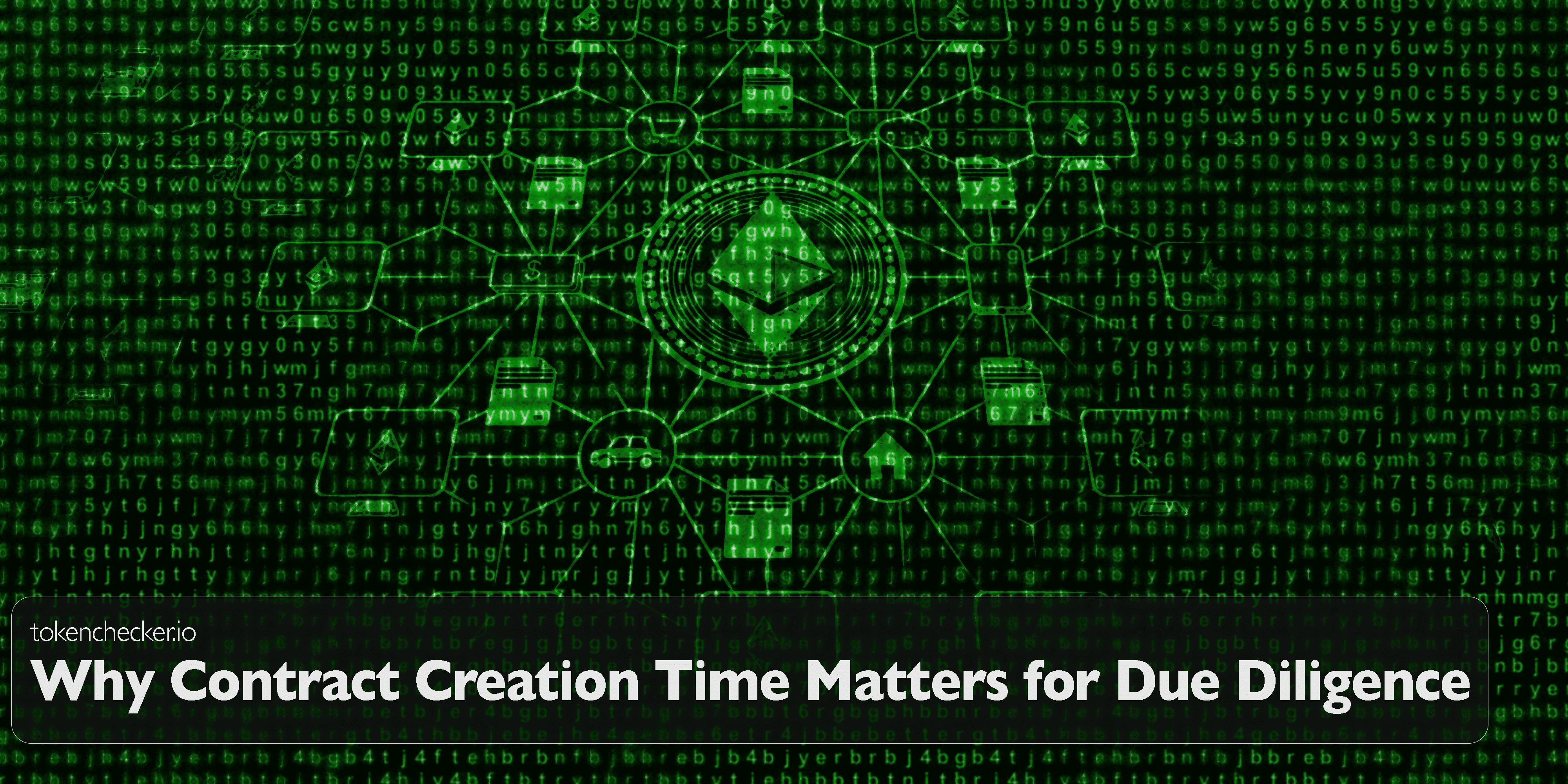
Why Contract Creation Time Matters for Due Diligence (Crypto)
Introduction
When you’re analyzing a new token, you might gloss over one of the simplest details the contract creation time. Just a timestamp, right? Not quite. That date can quietly reveal a mountain of insight about the project’s maturity, its security practices, and whether it might be walking the tightrope of legitimacy or preparing for a rug pull.
This article breaks down why contract creation time isn’t just a technical footnote. It’s a strategic data point that, when combined with the right tools like tokenchecker.io, can dramatically improve how you assess new tokens.
What Exactly Is Contract Creation Time?
Every token starts with a smart contract. When that contract is deployed to the blockchain, it’s logged forever with a timestamp the contract’s “birthday.” You can find this on explorers like Etherscan or via scanners like tokenchecker.io that surface it instantly.
Why does this matter? Because the creation time is the first verifiable proof the project exists. If a contract was just deployed hours ago but the Telegram is already hyping “utility,” that’s a huge red flag. Older contracts suggest the project has been around longer, possibly “battle-tested” and scrutinized. But don’t confuse age with safety context is everything.
What It Reveals About Security and Trust
Contracts can’t be altered once deployed, unless they’re proxies (which opens another can of worms). That means bugs or backdoors present on day one are there forever unless mitigated with advanced features. If you’re dealing with an old contract, the creation date becomes a checkpoint: has it stood the test of time? Were there any security events? Is it still aligned with current best practices?
On tokenchecker.io, you can instantly spot whether a contract is:
- Upgradeable (and who controls that)
- Deployed by a known wallet
- Carrying legacy vulnerabilities
- Missing liquidity lock or time-locked safety mechanisms
Combine that with creation time, and you get a historical perspective does the token’s development align with its promises?
Age Isn’t Everything But It Tells a Story
Younger contracts carry unique risks. Many scams deploy fresh contracts, pump them with hype, and pull the rug within hours. Seeing a creation date that’s “too recent” should immediately raise your guard.
tokenchecker.io highlights that with its Rug Pull Risk feature. It correlates the creation timestamp with liquidity behavior, ownership retention, and sniper bot patterns. That alone can flag “baby tokens” that are trying to grow fast or vanish faster.
Likewise, older contracts can be misleading. If the token hasn’t progressed since launch, that’s stagnation. A token created in 2021 with no real roadmap progress? Still a red flag, despite age.
Using tokenchecker.io to Analyze Creation Time
Here’s how the process works:
- Copy the contract address of any token.
- Paste it into tokenchecker.io and run the scan.
- See the Contract Creation Time as part of the risk profile.
- Compare it with:
- Whether liquidity was locked on day one
- The creator wallet's behavior since launch
- Any suspicious changes in contract behavior (especially if it’s upgradeable)
- Timeline of roadmap delivery
The contract’s “birthday” becomes the baseline for all other research. If the project says it launched six months ago, but the contract is two weeks old, something doesn’t line up.
Final Thoughts
Contract creation time isn’t flashy, but it’s foundational. It gives you an anchor a place to start verifying every claim a token makes. From security to legitimacy to roadmap honesty, it all comes back to: when was this thing really born?
tokenchecker.io turns this timestamp into actionable intelligence. It connects the dots across holder behavior, contract permissions, liquidity patterns, and more.